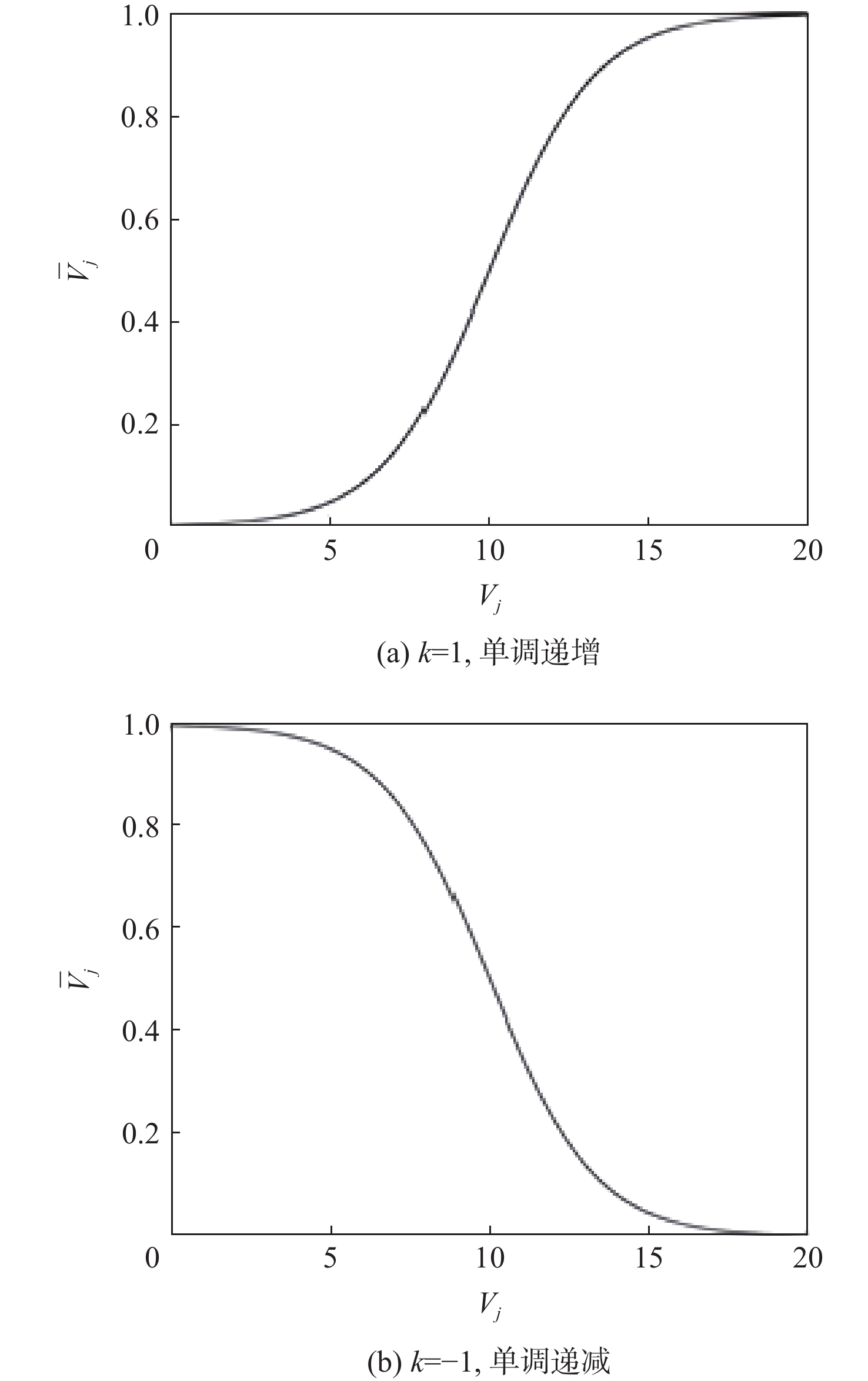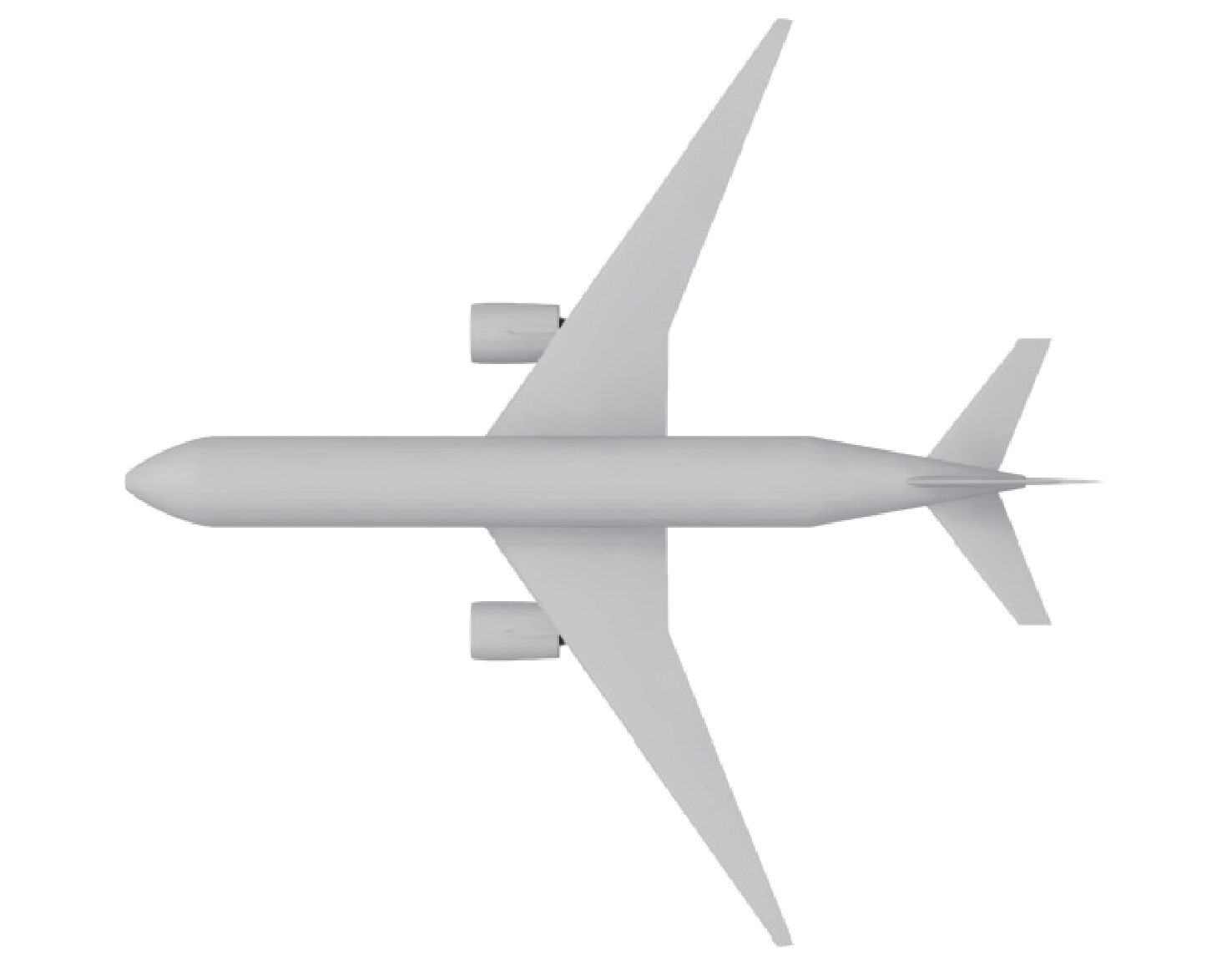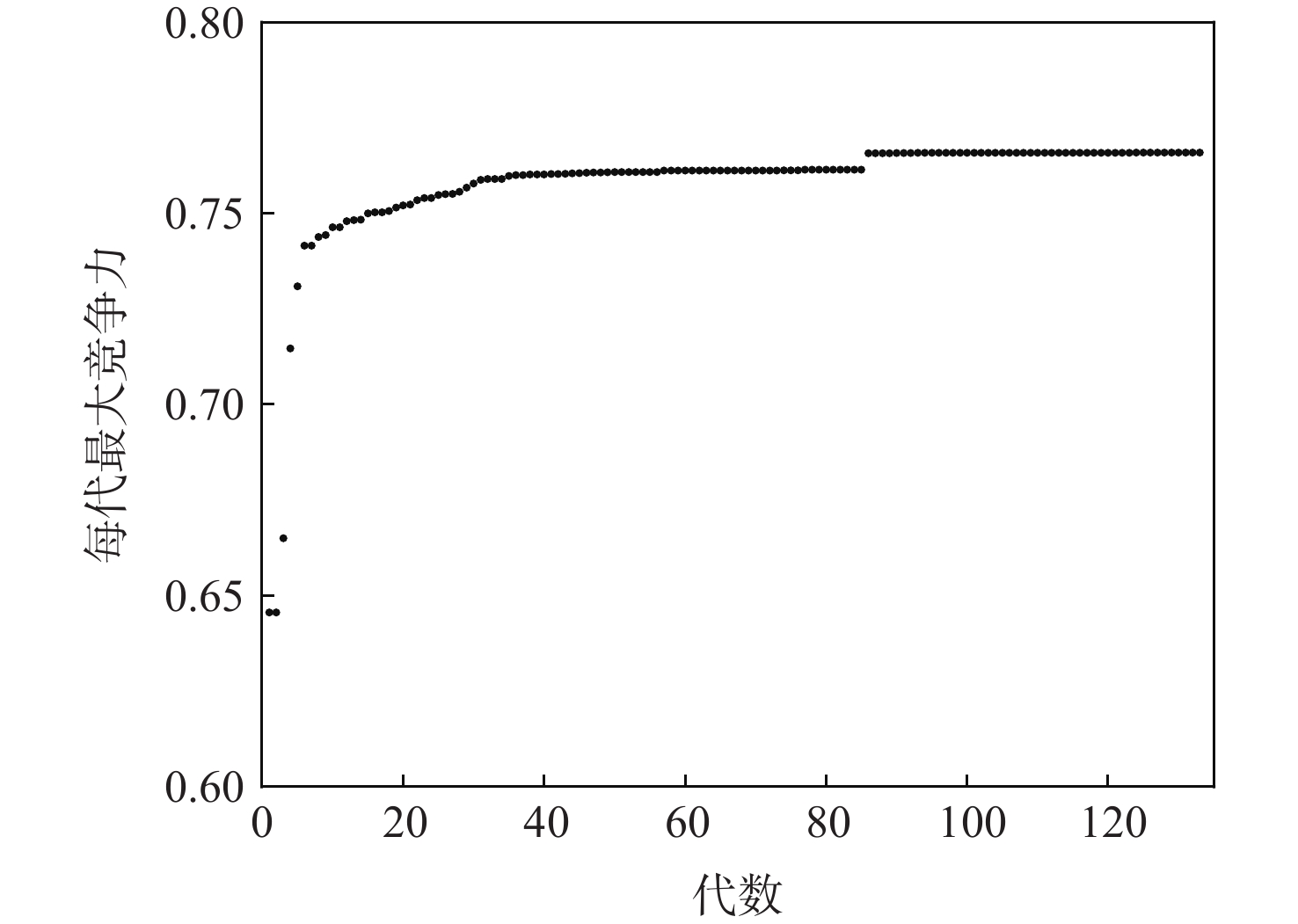Trade-off for top-level requirements of commercial aircraft using comprehensive evaluation and optimization
-
摘要:
确定顶层需求指标是民机设计流程之初的重要工作。针对民机顶层设计工作,提出一套民机顶层需求定量权衡方法。根据民机顶层需求与概念设计之间的关系,将概念设计方案的特性参数视为一组可行的顶层需求。将顶层需求的权衡分析问题转换为对飞机总体设计参数的优化问题。选择“经济性、舒适性、环保性、适应性、安全性/可靠性”这5条判断准则,建立民机顶层需求综合评价模型,评估顶层需求的综合竞争力。以竞争力最大为目标,优化概念方案,确定最优的顶层需求组合。在宽体客机案例中,得到了比初始需求更合理的顶层需求,验证了所提方法的可行性。
Abstract:As the key process of aircraft design, top-level requirements should be carefully considered at the beginning of design activities. A quantitative trade-off method for top-level requirements of commercial aircraft has been proposed. According to the relationship between top-level requirements and aircraft conceptual design, characteristics of aircraft concept can be regarded as a set of feasible top-level requirements. The trade-off of top-level requirements is transformed to the optimization of design parameters. With the consideration of five criteria, including economy, comfort, environmental protection, flexibility, and safety/reliability, a comprehensive evaluation model for top-level requirements of commercial aircraft is established. The optimal set of top-level requirements can be found by the optimization for the best result of the comprehensive evaluation model. In the case of wide-body commercial aircraft, more reasonable top-level requirements are obtained, which reveals the feasibility of the comprehensive evaluation and optimization method.
-
表 1 综合判断矩阵和权重
Table 1. Comprehensive judgement matrix and weiglas
判断准则 矩阵数据 ω B1 B2 B3 B4 B5 B1 1 5.472 5.472 3 1 0.335 B2 0.187 1 1.472 0.264 0.173 0.060 B3 0.187 0.843 1 0.2 0.165 0.051 B4 0.333 4.045 5 1 0.242 0.163 B5 1 5.955 6.427 4.91 1 0.391 表 2 初始顶层需求
Table 2. Initial top-level aircraft requirements
顶层需求 初步估值 相对权重/% 座公里油耗/(kg·km−1·座−1) 0.022 11.09 座公里成本/(元·km−1·座−1) 0.38 14.26 座椅宽度/mm 480 2.553 座椅排距/mm 800 2.553 客舱高度/m 2 1.986 设计航程/km 12000 13.31 展长/m 61 2.312 起飞场长/m 2700 8.785 着陆场长/m 1800 7.243 单发失效二阶段爬升梯度/% 3.5 9.40 进近速度/(m·s−1) 70 7.243 起降总噪声/dB 278 4.156 航线NOx排放/kg 1300 2.17 签派可靠度/% 98 12.94 表 3 概念方案主要设计参数
Table 3. Main design parameters of aircraft concept
部件 设计参数 取值 参考面积/m2 355 机翼 展弦比 10.5 1/4弦线后掠角/(°) 32 机身长/m 60 机身 机身宽/m 5.9 机身高/m 6.1 最大静推力/kN 334 发动机 涵道比 11 总压比 52 表 4 设计参数取值范围
Table 4. Range of para mefers
范围 单发海平面
最大静推力/kN机翼参考
面积/m2机翼展
弦比机翼1/4弦
线后掠角/(°)机翼翼根
相对厚度经济舱座
椅宽度/mm经济舱座
椅排距/mm客舱高度/m 下界 230 300 8.5 25 0.13 475 775 1.8 初始值 334 355 10.5 32 0.14 480 800 2 上界 400 430 11 36 0.15 525 850 2.3 表 5 顶层需求优化前后对比
Table 5. Comparison of top-level aircraft requirements
座公里油耗/(kg·km−1·座−1) 变化/% 座公里成本/(元·km−1·座−1) 变化/% 初步估值 优化结果 初步估值 优化结果 0.022 0.020 −9.1 0.38 0.369 −2.9 经济舱座椅宽度/mm 变化/% 经济舱座椅排距/mm 变化/% 初步估值 优化结果 初步估值 优化结果 480 475.0 −1.0 800 822.2 2.8 客舱高度/m 变化/% 设计航程/km 变化/% 初步估值 优化结果 初步估值 优化结果 2 2.19 9.5 12000 11956 −0.4 展长/m 变化/% 起飞场长/m 变化/% 初步估值 优化结果 初步估值 优化结果 61 61.1 0.2 2700 2397 −11.2 着陆场长/m 变化/% 单发失效二阶段爬升梯度/% 变化/% 初步估值 优化结果 初步估值 优化结果 1800 1725 −4.2 3.5 3.6 2.9 进近速度/(m·s−1) 变化/% 起降总噪声/dB 变化/% 初步估值 优化结果 初步估值 优化结果 70 71 1.4 278 276.8 −0.4 航线NOx排放 变化/% 签派可靠度/% 变化/% 初步估值 优化结果 初步估值 优化结果 1300 1251 −3.8 98 98.3 0.3 表 6 设计变量优化前后对比
Table 6. Comparison of variables
单发海平面最大静推力/kN 变化/% 机翼参考面积/m2 变化/% 机翼展弦比 变化/% 机翼1/4弦线后掠角/(°) 变化/% 初始值 优化值 初始值 优化值 初始值 优化值 初始值 优化值 334 341.5 2.2 355 339.1 −4.5 10.5 11.0 4.8 32 30.4 −5.0 机翼翼根相对厚度 变化/% 经济舱座椅宽度/mm 变化/% 经济舱座椅排距/mm 变化/% 客舱高度/m 变化/% 初始值 优化值 初始值 优化值 初始值 优化值 初始值 优化值 0.14 0.131 −6.4 480 475.0 −1.0 800 822.2 2.8 2 2.19 9.5 -
[1] WALDEN D D, ROEDLER G J, FORSBERG K, et al. Systems engineering handbook: A guide for system life cycle processes and activities[M]. 4th ed. San Diego: Wiley, 2015: 47-56. [2] ERES M H, BERTONI M, KOSSMANN M, et al. Mapping customer needs to engineering characteristics: An aerospace perspective for conceptual design[J]. Journal of Engineering Design, 2014, 25(1-3): 64-87. doi: 10.1080/09544828.2014.903387 [3] 黄俊, 武哲, 孙惠中, 等. 作战飞机总体设计评价准则和评估方法研究[J]. 航空学报, 2000, 21(1): 70-73.HUANG J, WU Z, SUN H Z, et al. Study on evaluation criteria and assessment methodology for conceptual/preliminary design of combat aircraft[J]. Acta Aeronautica et Astronautica Sinica, 2000, 21(1): 70-73(in Chinese). [4] PARKER J. Mission requirements and aircraft sizing[C]//Proceedings of the Aircraft Systems, Design and Technology Meeting. Reston: AIAA, 1986. [5] PETEILH N, KLEIN T, DRUOT T Y, et al. Challenging top level aircraft requirements based on operations analysis and data-driven models, application to takeoff performance design requirements[C]//Proceedings of the AIAA Aviation 2020 Forum. Reston: AIAA, 2020. [6] TORENBEEK E. Advanced aircraft design: Conceptual design, analysis and optimization of subsonic civil airplanes[M]. Chichester: John Wiley and Sons, Ltd. , 2013: 31-33. [7] RAYMER D P. Aircraft design: A conceptual approach[M]. 6th ed. Washington, D.C.: AIAA, Inc. , 2018: 9-15. [8] SADRAEY M H. Aircraft design: A systems engineering approach[M]. Chichester: John Wiley and Sons, Ltd., 2013: 12-15. [9] DIRKS G, MELLER F. Multidisciplinary design optimization - Enhanced methodology for aircraft and technology evaluation[C]//Proceedings of the 8th Symposium on Multidisciplinary Analysis and Optimization. Reston: AIAA, 2000. [10] 索欣诗, 李晓勇, 余雄庆, 等. 客机总体方案的综合评价方法[J]. 南京航空航天大学学报, 2018, 50(4): 558-564.SUO X S, LI X Y, YU X Q, et al. Comprehensive evaluation method for conceptual design of commercial aircraft[J]. Journal of Nanjing University of Aeronautics & Astronautics, 2018, 50(4): 558-564(in Chinese). [11] 宋笔锋, 张彬乾, 韩忠华. 大型客机总体设计准则与概念创新[J]. 航空学报, 2008, 29(3): 583-595.SONG B F, ZHANG B Q, HAN Z H. The study of concept design criteria for large-scale passenger aircraft with new technologies[J]. Acta Aeronautica et Astronautica Sinica, 2008, 29(3): 583-595(in Chinese). [12] 陈迎春, 张美红, 张淼, 等. 大型客机气动设计综述[J]. 航空学报, 2019, 40(1): 522759.CHEN Y C, ZHANG M H, ZHANG M, et al. Review of large civil aircraft aerodynamic design[J]. Acta Aeronautica et Astronautica Sinica, 2019, 40(1): 522759(in Chinese). [13] VINK P, BRAUER K. Aircraft interior comfort and design[M]. Boca Raton: CRC Press, 2011. [14] RICHARDS L G, JACOBSON I D. Ride quality assessment III: Questionnaire results of a second flight programme[J]. Ergonomics, 1977, 20(5): 499-519. doi: 10.1080/00140137708931659 [15] CHAI X A, YU X Q, WANG Y. Tradeoff study between cost and environmental impact of aircraft using simultaneous optimization of airframe and engine cycle[J]. International Journal of Aerospace Engineering, 2017, 2017: 1-10. [16] CLARK P. Buying the big jets: Fleet planning for airlines[M]. Hampshire: Ashgate Publishing Limited, 2007: 29-41. [17] 郭婧宜, 孙宇锋, 吴寒雪, 等. 基于STT与模糊QFD的装备质量特性分解方法[J]. 北京航空航天大学学报, 2012, 38(8): 1090-1095.GUO J Y, SUN Y F, WU H X, et al. Decomposition method of equipment quality characteristic based on STT and fuzzy QFD[J]. Journal of Beijing University of Aeronautics and Astronautics, 2012, 38(8): 1090-1095(in Chinese). [18] 董彦非, 王礼沅, 王卓健, 等. 基于空战模式和AHP法的空战效能评估模型[J]. 系统工程与电子技术, 2006, 28(6): 885-888.DONG Y F, WANG L Y, WANG Z J, et al. Air combat effectiveness assessment model based on operational pattern and analytic hierarchy process[J]. Systems Engineering and Electronics, 2006, 28(6): 885-888(in Chinese). [19] LAMBE A B, MARTINS J R R A. Extensions to the design structure matrix for the description of multidisciplinary design, analysis, and optimization processes[J]. Structural and Multidisciplinary Optimization, 2012, 46(2): 273-284. doi: 10.1007/s00158-012-0763-y [20] CHAI X, YU X Q, WANG Y. Multipoint optimization on fuel efficiency in conceptual design of wide-body aircraft[J]. Chinese Journal of Aeronautics, 2018, 31(1): 99-106. doi: 10.1016/j.cja.2017.10.006 [21] FIELDING J. Introduction to aircraft design[M]. Cambridge: Cambridge University Press, 1999: 255-258. 期刊类型引用(0)
其他类型引用(1)
-








 下载:
下载:








